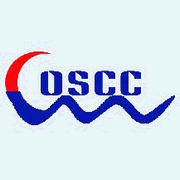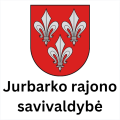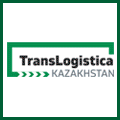London / UK, May 3, 2012 – A new airside service at Heathrow airport has been launched by Kuehne + Nagel to enhance its critical spare parts logistics offering to the aerospace industry.
The new solution means Kuehne + Nagel is even better positioned to meet the unique challenges an Aircraft on Ground (AOG) situation presents. It allows engineers to remain on stand with the grounded aircraft while Kuehne + Nagel experts deliver parts directly to them in a matter of minutes, increasing their productivity and helping to reduce aircraft downtime.
A new facility located at Heathrow’s Terminal 3 supports this service. Storage of critical spare parts at the airport itself allows deliveries to be made to stand at any of the currently operating airport terminals within a 15 minute lead time. Supply to the airside facility is managed by Kuehne + Nagel’s 5,000m2 airfreight hub at Uxbridge, Middlesex, with seamless access through airport security controls, thanks to Kuehne + Nagel’s status as a regulated agent.
As part of its global ‘Supply the Sky’ offering, Kuehne + Nagel has spent many years developing services to meet the critical issue of spare parts availability, including the provision of dedicated handcarried deliveries for AOG situations. Many of Kuehne + Nagel’s customers have come to rely on this service, and welcome the new development at Heathrow.
Daniel Lerch, Manager AOG Management for SR Technics commented, “Delivering material directly on stand during an AOG situation is crucial for an efficient recovering of an aircraft. Very often the last mile of the handover to the customer is the most difficult part in the whole supply chain if it comes to airside delivery. Handling agents are out of their service hours and nobody can be reached to bring the part to the engineers. Kuehne + Nagel is closing an important gap by providing this new service at LHR and we are hoping that they will be able to expand their service to other stations.”
Chris Edwards, Senior Vice-President Airfreight for Kuehne + Nagel North-West Europe said, “By working in close cooperation with our aerospace customers we have gained a deep understanding of their business and challenges. Based on their feedback, we have responded with a new service that is tailored to meet their requirements and also perfectly complements our market-leading Supply the Sky portfolio of products.”
Source Kuehne + Nagel
2012-05-04
Member Only advantages make travel more affordable to families
Wizz Air, the largest low-fare, low-cost airline in Central and Eastern Europe, announced today that it has lowered the yearly membership fee of the Wizz Xclusive Club to just €29.99. The Wizz Xclusive Club was launched in 2011 and already reached over 200,000 members. All club members have access to special low fares on each booking made. The members’ benefit can also be extended to family members at no cost and Wizz Air believes its investment in growing the Xclusive Club benefits small groups and families travelling together since they have access to even lower Wizz Air fares through the club’s membership.
To celebrate the lower Xclusive Club annual membership fee of just €29.99 Wizz Air has launched a one day 20% off campaign for all bookings made tomorrow (Fri 6 May) by Xclusive Club members.
“Wizz Air’s Xclusive Club is our way to show families how to beat the recession and book their holidays on wizzair.com with savings up to €10 per flight, per passenger. Wizz Air has lowered the membership fee to €29.99 and club members can book discounted fares for themselves and up to 9 fellow travellers. On top of the year around discounts only available to Xclusive Club members, tomorrow (Fri 6 May) all club members can book Wizz Air flights with an additional 20% off all fares. Families who want to beat the recession should join the Xclusive Club today”, said Daniel de Carvalho, Corporate Communications Manager at Wizz Air.
Source Wizz Air Group
Kongsberg Maritime completes delivery of advanced offshore operations simulator
Superior Energy Services of Houston, Texas, took delivery of one of the most advanced maritime training simulators ever developed, in April 2012. The next-generation simulator from Kongsberg Maritime will be used to provide integrated, real-time training for Superior’s offshore marine personnel at its new facility in Anchorage, Alaska. Under the terms of the contract, signed September 2011, Kongsberg Maritime supplied Superior Energy Marine Technical Services with a full mission trainer in support of critical operations including ship bridge maneuvering and navigation, anchor handling, ROV operations, crane operations, process control, containment, and controlled pumping and flaring of hydrocarbons.
The system supports the full spectrum of offshore Simultaneous Operations (SIMOPS) activities in support of developing best practices for both surface and sub-sea marine practices – all conducted in real time and in the safety of a simulated environment. The simulator features two full offshore service vessel bridges, with 360 degree field of view, an offshore crane simulator, supplied by KONGSBERG company, GlobalSim, a DeepWorks ROV simulator, supplied to KONGSBERG by Fugro Subsea Services Ltd and a separate Process Simulator, for operator training and control system checkout in addition to multiphase flow simulation, supplied by Kongsberg Oil & Gas Technologies.
Superior’s working relationship with Shell Offshore was a primary motivator in establishing this state-of-the-art facility. Superior is committed to achieving a safe work environment and these core objectives were incorporated in the system design: “At Superior Energy Services, we believe in ensuring our people are as prepared and properly trained as possible. It makes sense from a safety perspective, from an environmental perspective and from a business perspective – it is simply the right thing to do,” said Captain Scott Powell.
“Partnering with Kongsberg Maritime provided a depth of engineering capability that allowed us to mirror a physical model-based simulation solution. This is the closest we can come to creating realistic scenarios without facing these circumstances first hand. Our people will be the best prepared in the industry and will have full confidence in the critical skills they will learn with this state-of-the-art simulator. This multi-team training capability will have a net positive effect on our preparedness and our commitment to health, safety and the environment,” continues Powell.
The KONGSBERG Offshore Vessel Simulator allows companies to train employees for the highly technical and often hazardous operations they will encounter in the offshore environment. Kongsberg Maritime simulators are designed to provide realistic scenarios for a wide variety of environmental applications.
Source Kongsberg Maritime
- Order intake at prior-year level
- Revenue up slightly
- Commercial Vehicles: Weaker core markets of Europe and Brazil offset by other regions
- Operating profit impacted by increased competition in stagnating markets
- Power Engineering remains stable earnings driver
- Free cash flow dominated by acquisition in India and divestment of Ferrostaal
- Outlook for full-year 2012 confirmed: Slight decline in revenue, return on sales roughly in line with long-term target average
Following its strong performance in 2011, MAN's business continued at a similar level in Q1/2012. Headwinds came from the increased competition in stagnating markets. However, the slump in commercial vehicle demand that had been widely feared failed to materialize.
Order intake in the Commercial Vehicles business area actually rose slightly by 1% compared with the prior-year quarter, to €3.4 billion. MAN Truck & Bus recorded a rise of 2% to €2.5 billion, whereas orders at MAN Latin America declined by 2% to €0.8 billion due to the introduction of the Euro V emission standard. Orders in the Power Engineering business area amounted to €1.0 billion (previous year: €1.1 billion), €0.9 billion of which was attributable to MAN Diesel & Turbo. The Engines & Marine Systems strategic business unit in particular was weaker.
MAN increased its Q1 revenue by 3% year-on-year to €3.8 billion. MAN Truck & Bus was particularly successful, climbing 6% to €2.1 billion, despite the slight overall decline in the European commercial vehicles market. However, MAN benefited from growth in Russia and in other, non-European regions. Revenue at MAN Latin America declined slightly by 2% to €0.8 billion. Q1 revenue in the Power Engineering business area rose 5% to €1.0 billion. MAN Diesel & Turbo increased by 3% to €0.9 billion, while Renk jumped 25% to €105 million.
The MAN Group recorded an operating profit of €253 million in the first quarter (previous year: €325 million). The 22% decline is due above all to increasing competition in the stagnating markets in the Commercial Vehicles business area. As a result, the operating profit at MAN Truck & Bus amounted to only €67 million (previous year: €97 million), while that at MAN Latin America was €80 million (previous year: €99 million). MAN will combat this with measures to increase its profitability and efficiency. By contrast, earnings at MAN Diesel & Turbo and Renk remained stable at prior-year levels.
Overall, the MAN Group's return on sales (ROS) amounted to 6.6%. The ROS in the Commercial Vehicles business area declined to 5.0% (6.9%), while Power Engineering remained at a high 12.9% (13.3%).
One of the MAN Group's critical success factors is its uncompromising focus on the areas of transportation and energy, which continue to offer excellent growth potential. Demand in these sectors is constantly growing in the emerging markets in particular. Our BRIC strategy addresses precisely this topic and has allowed us to secure timely access to these key markets of the future. In many cases, our operations in these promising markets have already reached a stage that others are still aiming for. MAN will continue to exploit this head start.
The joint projects within the Volkswagen Group will also assist in this. Volkswagen AG notified MAN SE on April 13, 2012, that it held 73.00% of the voting rights as of the April 12, 2012, trading date. The new opportunities to work together with Volkswagen and Scania offer MAN additional momentum. By cooperating in the areas of procurement, development, and manufacturing, we can leverage the synergies needed for a full-scale competitive push.
Although MAN is expecting solid growth on the global transportation and energy markets in the long term, we continue to see global economic growth weakening in 2012. Against this backdrop, we are confirming the outlook we gave at the beginning of the year: We expect full-year revenue in the Commercial Vehicles business area to decline slightly by up to 5%, whereas Power Engineering revenue should increase by 5%. Given the overall predominance of the Commercial Vehicles business area, we expect revenue for the MAN Group as a whole to decline slightly, which will also lead to a drop in operating profit. Return on sales will correspond roughly to the long-term target average of 8.5%.
Source MAN SE
FREIGHTGATE-8, dnata's newest terminal located at Dubai World Central-Al Maktoum International Airport (DWC), has announced that air cargo volume rose 700 per cent during the last financial year, reports Dubai's Arabian Business.com .
Air cargo throughout at the dnata-operated air cargo terminal, which opened in June 2010, amounted to 127,665 tonnes while the total number of active cargo flights handled by the dnata team was 2,832 for the financial year, a 600 per cent growth compared to the previous period. The new facility currently handles local and sea-air export and import cargo as well as transit cargo at DWC.
One of the most recent highlights included flying a purpose-built gas turbine to Nigeria. With a total weight of 95 tonnes, it was the heaviest single piece of cargo ever handled by any of the dnata FreightGate terminals.
Source Shipping Gazette - Daily Shipping News
RUSSIA's Volga-Dnepr Airlines, one of the two air cargo companies of Volga-Dnepr Group specialising in chartered freight services, has delivered two hydrant dispensers for aircraft refuelling from Ankona, Italy, to Nairobi, Kenya, said the company statement.
"Hydrant dispensers are mobile stations designed for aircraft refuelling and each weighs five tons and is more than seven metres long. The loading operation was assisted by aircraft winches as the fuel hydrants were driven onto the aircraft under their own power," said the airline.
The delivery was carried out by using one of the airline's IL-76TD-90VD aircraft for its long-term partner, the UK charter specialist Chartersphere.
Source Shipping Gazette - Daily Shipping News
HAWAII's environmental freight fee tax has been quashed by a US District Judge David Ezra in a permanent injunction denying the state the right to collect money for invasive species inspection, or levy quarantine and eradication fees from customers who import cargo.
Air Transport Association of America (ATA) filed a lawsuit in 2010 to rule that the Hawaiian Freight Fee Law, as applied to air carriers, is pre-empted and prohibited by the Anti-Head Tax Act and the Airline Deregulation Act.
According to a report from Pacific Business News, carriers Hawaiian Airlines, Pacific Air Cargo and Aloha Cargo Agency Services did not participate in the lawsuit but collected the fee.
Source Shipping Gazette - Daily Shipping News
2012-05-03
The New Zealand Southern blue whiting trawl fishery has been certified as sustainable against the Marine Stewardship Council (MSC) standard for a sustainable and well managed fishery, and its products can now bear the blue MSC ecolabel.
The fishery has demonstrated - through the rigorous, independent assessment process conducted by Intertek Moody Marine – the fish stocks being targeted are healthy, the fishing practices have minimal impact on the marine eco-system and overall the fishery is well managed.
About the fishery
The certification covers the vessels nominated by Deepwater Group operating in the Bounty Platform, Campbell Island Rise and Pukaki Rise management areas within the New Zealand Exclusive Economic Zone (EEZ).
Catches of Southern blue whiting are taken mostly by semi-pelagic trawling methods.
The volume of whiting taken in these management areas varies depending on the allowable catch set annually by the NZ Ministry for Primary Industries (formerly the Ministry of Fisheries). This is determined through a quota management system (QMS) with the goal being to maintain stock levels to support maximum sustainable yields.
In 2010/11 the total allowable commercial catch (TACC) set by Government under the QMS was 44,848 tonnes and in that period approximately 39,000 tonnes was landed.
The certified vessels use mitigation devices (i.e. bird bafflers and tori lines) and manage fish waste discards to reduce interactions with seabirds. A Marine Mammal Operating Procedure has also been implemented to minimise marine mammal captures among the deepwater fleet. Trawling operations in the fishery occur over a relatively small area that does not change substantially from year to year, resulting in a low level of impact on seabed habitats.
Deepwater Group and the NZ Ministry for Primary Industries has taken a partnership approach to fisheries management, underpinned by a Memorandum of Understanding outlining the prime fishing areas and a work plan to better manage deepwater fisheries.
Processed on board factory vessels, the majority of the whiting caught is exported to markets in Europe, Japan, Russia and Spain. Southern blue whiting makes a high quality surimi product with one third of the catch being sent to Japan and the USA in this form. Whiting fillets are also exported to Australia.
What the fishery operators say
“We’re very pleased that the fishery has met the Marine Stewardship Council’s rigorous environmental standards,” said the group’s chief executive George Clement.
“The endorsement has confirmed for our customers what we already know – that a co-operative approach to fisheries management, backed up by excellent science and New Zealand’s world leading quota management system, gets results.”
What the MSC says
MSC Manager, Pat Caleo, says: “The certification of the NZ Southern blue whiting fishery is a great result and is a tribute to the effective management of the fishery by the Ministry for Primary Industries and the NZ fishing industry itself.”
“Deepwater Group should be commended for undertaking, and meeting, such a scientifically rigorous and transparent assessment of their fishing practices. This is the first Southern blue whiting fishery in the world to gain MSC certification, and we expect demand for these products to be high in key export markets.”
Source MSC
Sephora, the leading retail beauty chain and member of the luxury products group LVMH, has extended its logistics partnership with Kuehne + Nagel for a further three years.
Kuehne + Nagel has been managing Sephora’s national distribution centre in Italy since 2005. With the newly signed agreement, Kuehne + Nagel will expand its services to supply the customer’s outlets in various European countries including Bulgaria, Croatia, Greece, Poland and Turkey as well as in the Middle East and in Asia. In total, over 300 stores, 112 of them in Italy, will be served according to the new agreement. As a result, Kuehne + Nagel expects to handle up to 40 million pieces of fragrances, make-ups, skin care and other beauty care products per year for the customer.
The Sephora logistics operations will be provided on a dedicated basis, in a newly built 12,900 sqm facility, fully compliant with the latest security and “green building” standards and equipped with large photovoltaic solar
power installations.
Located in the Logistics Park of Santa Cristina e Bissone in the Lombardy region – some 50 kilometers southeast of Milan - the new facility ideally complements the existing 90,000 sqm area Kuehne + Nagel already operates in the Park.
Maurizio Stroppa, Supply Chain Manager of Sephora, explained: “The development of Sephora is greatly supported by its logistics choices. In this context, the new international logistics centre is a key element for our present and future growth in Eastern Europe, Far East and South East
Asia.”
"We are delighted that the customer has extended the contract and thus demonstrated its confidence in Kuehne + Nagel’s expertise, capabilities and staff”, said Ruggero Poli, Managing Director of Kuehne + Nagel Italy. “Even more so as it concerns the internationalisation of the logistics operation”, he added.
Source Kuehne + Nagel
Stockholm, Sweden - At the conference "Future Ports" held in Stockholm 25th-26th April, APM Terminals’ Head of Project Implementation, Soren Sjostrand Jakobsen, told delegates that increasing productivity to meet customer demand is critical for container terminals. "Our customers are building bigger and bigger ships and it is imperative that we are able to increase our delivered productivity at minimum the same pace as the ships grow - but preferably much more" Mr. Jakobsen said.
Close to 80% of the new container vessel capacity coming in the next couple of years are super post-panamax vessels. Shipping lines need these big vessels to compete but clearly cannot afford these to remain in port for days. "The container transportation market is expected to continue growing in the years to come and terminal operators have to find ways to increase productivity. APM Terminals has a range of initiatives to improve processes as well as applying new and innovative solutions and technology to lift productivity" Mr. Jakobsen stated. "We - and other terminals operators I'm sure - have terminals in their portfolio where a 40-50 % productivity improvement is not an unrealistic goal and even for high performing terminals it is possible to improve further".
Mr. Jakobsen also told delegates that though all these initiatives require a lot of investment it actually makes good financial sense for the terminal operator. "Improving productivity gets you free capacity, reduces cost, improves your product and you get happy customers. If we can improve productivity by 50% in a one million TEU capacity terminal we create a game-changer in the industry for our customers through better economics, reliability and capacity availability”.
"Productivity will be the battleground for terminal operators and those who are able to meet our customers’ requirements will be the winners", Mr. Jakobsen predicted.
Source APM Terminals
2012-05-02
Geneva - The International Air Transport Association (IATA) announced global traffic results for March showing that total passenger demand rose 7.6% and freight demand climbed 0.3% compared to the same month last year.
Comparisons with March last year are affected by events that depressed passenger demand in 2011, including the Arab Spring, which disrupted travel in the Middle East and North Africa beginning in February 2011 and the earthquake and tsunami in Japan in March 2011 that impacted air travel across the Asia-Pacific region. IATA estimates that the year-on-year rise in air travel in March was about two percentage points higher than it would otherwise have been in the absence of these events.
Cargo demand, meanwhile, was affected by the timing of the Chinese New Year, which occurred in January this year—leading to stronger February shipments—but took place in February 2011—leading to stronger March 2011 shipments and weaker year-to-year comparisons. Compared to February 2012, March air cargo demand was significantly stronger by 2.2%.
“If we discount the industry’s growth by two percentage points as a result of the extraordinary events in 2011, airlines still managed an expansion in the range of 5-6%. Given the prevailing economic conditions with some European states returning to recession, passenger demand is holding up well. But this is bringing little relief to the bottom line because yields are not keeping pace with the continued very high price of oil,” said Tony Tyler, IATA’s Director General and CEO.
Oil prices have remained stubbornly above $100/barrel (Brent crude) for the past 14 months. In 2008, oil prices rose from $90/barrel in January to a peak of $147/barrel in late July. But by November, they had fallen back to less than $50/barrel. “We have not seen such sustained high oil prices previously. Jet fuel prices have risen 8% since January. Considering that fuel now accounts for 34% of average operating costs, it’s an increase that hurts,” said Tyler.
Total passenger capacity rose 4.4% compared to March 2011, resulting in a load factor of 78.3%, up 2.4 percentage points over the year-ago period. Freight capacity, however, climbed 1.7% year-on-year, above the rate of demand, placing pressure on load factors.
March 2012 vs. March 2011 RPK Growth ASK Growth PLF FTK Growth AFTK Growth
International 9.6% 5.0% 77.7 0.1% 1.7%
Domestic 4.5% 3.3% 79.3 1.3% 1.7%
Total Market 7.6% 4.4% 78.3 0.3% 1.7%
YTD 2012 vs. YTD 2011 RPK Growth ASK Growth PLF FTK Growth AFTK Growth
International 8.2% 5.5% 76.4 -0.9% 2.6%
Domestic 6.0% 4.9% 77.5 0.5% 2.1%
Total Market 7.4% 5.3% 76.8 -0.7% 2.5%
International Passenger Markets
International air travel rose 9.6% in March compared to the year-ago period, while capacity climbed 5%, resulting in a load factor of 77.7%, up 3.2 percentage points from March 2011.
European airlines recorded the strongest traffic growth among the major regions despite deepening recessions in parts of the continent, with demand up 8.8% year-on-year, on a 4.1% increase in capacity. Load factor rose to 78.5%. This growth is partly the result of expanding European exports to stronger Asian economies and the associated business travel.
Asia-Pacific carriers also experienced healthy growth, with demand up 8.1% on a 4.3% rise in capacity, pushing load factors up to 76.5%. Year-to-year comparisons were impacted by the March 2011 Japan earthquake and tsunami, which are estimated to have reduced 2011 demand by 3%, exaggerating year-over-year growth by a like amount.
North American airlines had a 5.3% rise in passenger traffic, a solid performance for the region and concurrent with better economic results from the US, particularly with increasing consumer confidence. Capacity rose at a much slower rate than demand, by 0.9%, pushing load factors up fractionally to 80.3%, the highest of all the regions. Very tight capacity control in this region is allowing airlines to boost asset utilization, helping to offset part of the rise in fuel costs.
Middle East airlines’ demand jumped 20.9% on a 12.4% rise in capacity, propelling load factors to 78.7%. This was the largest rate of growth for any region but mostly reflects the weakness of travel last year following the Arab Spring. IATA estimates this inflated traffic gains by seven percentage points.
Latin American carriers experienced the second-slowest demand growth among the regions, but traffic still rose 7.7% year-over-year on a 6.7% rise in capacity. Passenger load factor was 77.9%. It is among the regions least impacted by the distortions in 2011 and this latest expansion reflects a continuation of the steady growth seen since early 2009.
African airlines reported a 14.3% rise in traffic, of which an estimated 11 percentage points was attributed to traffic suppression in March 2011 owing to the Arab Spring. Capacity rose 10.7%, resulting in a load factor of 64.8%, which although an improvement year-over-year, was by far the lowest among the regions.
Domestic Passenger Markets
Domestic markets grew at less than half the rate of international markets, just 4.5%, in part owing to the timing of Carnival in Brazil but also owing to slower growth in India.
Japan experienced the strongest traffic growth, up 15.5% year-on-year. This, however, reflects the devastating impact on year-ago traffic of the natural disasters of March 2011. March 2011 traffic was down 27% on March 2010 and the performance would have been worse had the earthquake struck earlier in the month. While the market has significantly recovered, domestic traffic levels remain 10% below those of the pre-crisis period. In fact, since the end of last year, domestic travel has started to retreat. Capacity was 2.6% below previous-year levels and the load factor was 64.8%, the lowest of any domestic market.
China’s domestic traffic continued on its strong growth path with an expansion of 10.1% but this was exceeded by an 11.8% rise in capacity, with load factors slipping to 80.5%.
US March domestic traffic rose 1%, but capacity contracted 0.7%, pushing load factors to 84.3%, the highest for any market.
Airline traffic in Brazil was affected by the timing of Carnival, which occurred in February 2012, a month earlier than in 2011. March 2012 traffic growth of 2.9% is estimated to be about half what it would have been absent the distortion. Capacity rose 9.2%, pushing the load factor down to 65.2%.
India traffic rose 4% year-over-year, much slower than the last few months, reflecting the wider economic slowdown, while capacity climbed 4.8% and load factor was 72.2%.
Air Freight (Domestic and International)
Air freight markets are now showing signs of renewed expansion. Freight Tonne Kilometers (FTKs) were over 4% higher in March than they were in the fourth quarter of 2011. However, compared with March last year the size of the market was up just 0.3%. This is because the Chinese New Year occurred in February 2011, resulting in strong March 2011 shipments as factories reopened following the holiday period.
Asia-Pacific and European airlines saw their freight traffic decline 3.1% and 1.9%, respectively, compared to a year ago.
Middle Eastern carriers had a 15.1% rise in demand, the healthiest performance among the regions, with about four percentage points of that rise attributable to Arab Spring-related traffic suppression last year. Latin American carriers’ traffic climbed 4.9%, while African carriers saw a 3.9% rise compared to the year-ago period. North American airlines’ demand rose 1.6% year-on-year.
Source IATA
CENTRAL China's metropolis of Chongqing saw 25 new logistics companies establish in the first quarter, reports Xinhua.
These companies include six foreign-owned and 19 operating international logistics businesses. Up to now, there were 321 international logistics enterprises in Chongqing.
Source Shipping Gazette - Daily Shipping News
SOUTHEAST China's coastal Fujian province posted an 11 per cent increase in road freight volume to 118 million tonnes in the first quarter, reports Xinhua.
Road passenger head count was up 2.7 per cent to 198 million in the first quarter year on year. Cargo volume by water borne transport increased 9.6 per cent to 44 million tonnes during the same period, while the passenger volume grew 8.7 per cent to 3.77 million people.
Source Shipping Gazette - Daily Shipping News
NORTH China's Ningxia recorded a 12.9 per cent growth in rail freight volume to 12.56 million tonnes in the first quarter, hitting a new high since last two years, reports Xinhua.
The cargo includes 9.7 million tonnes of coal, 726,000 tonnes of oil, 316,000 tonnes of steel, 40,000 tonnes of non-metal ore, 156,000 tonnes of grain, 485,000 tonnes of chemical fertiliser, 196,000 tonnes of chemical products and 433,000 tonnes of container cargo which was up 46.7 per cent.
The region's 40 key enterprises anticipating rail transport carried 11.81 million tonnes of cargo, growing 56.2 per cent year on year.
Source Shipping Gazette - Daily Shipping News
SOUTHWEST China city Chongqing handled 5.46 million tonnes of outbound rail freight in the first three months of this year, an fractional increase of 0.55 per cent over the same period a year ago, Xinhua reports.
Outbound containerised cargo dropped 10.8 per cent to 191,000 tonnes. Coal increased 13.9 per cent to 2.69 million tonnes. Metallic ore dropped 27.7 per cent to 811,000 tonnes. Steel fell one per cent to 283,000 tonnes.
In the same period, inbound railway cargo volume grew 1.1 per cent to 9.89 million tonnes. Container cargo increased 11 per cent to 828,000 tonnes. Coal dropped 8.8 per cent to 2.86 million tonnes. Petroleum jumped 34.7 per cent up to 470,000 tonnes. Metallic ore plunged 25.8 per cent to 307,000 tonnes. Steel grew 11.6 per cent to 2.29 million tonnes. Grain increased 31.2 per cent to 653,000 tonnes.
In March, Chongqing loaded 1.98 million tonnes of cargo onto 33,599 outbound rail cars. The cargo volume was 11.5 per cent more than in February and 4.6 per cent more than in the same month in 2011.
Source Shipping Gazette - Daily Shipping News
The magazine SEA has been published since 1935
International business magazine JŪRA MOPE SEA has been published since 1999
The first magazine in Eurasia in the four languages: English, Chinese, Russian and Lithuanian
|
|




.jpg)






